This CEILING DOCTOR Web Site is operated by Rhonco Enterprises Ltd. - Copyright © 2007 Rhonco Enterprises Ltd.
If you care for indoor plants they will care for you!
Conclusions for VOC Abatement in Indoor Air
- Screen all new furniture, paints, adhesives, cleaning products, carpets and building materials for potentially harmful VOC's. There are low VOC choices in most cases.
- Allow for adequate ventilation after the introduction of new building materials, computers, carpets, furniture, paint, and so on.
- Use a minimum of 2 to 3 low-light requiring plants of different species in 8 to 10 inch pots, for every 100 square feet of floor space.
English ivy

Warnecki
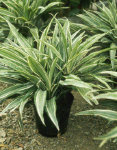
Green spider plant

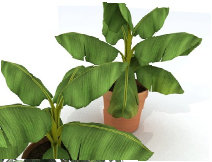
Gerbara daisy

Mums

Peace lily
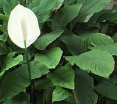
Heart leaf philodendron

Elephant ear philodendron

Mother-in-laws tongue
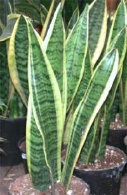
Gerbera daisy
English ivy
Marginata
Peace lily
English ivy
Marginata
Peace lily
The best species for removing Trichloroethylene are:
Gerbara daisy
Mums
English ivy
Mother-in-laws tongue
Warnecki
Peace lily
Mums
English ivy
Mother-in-laws tongue
Warnecki
Peace lily
The best species for removing Benzene are:
Banana
Mother-in-laws tongue
English ivy
Bamboo palm
Heart leaf philodendron
Elephant ear philodendron
Green spider plant
Mother-in-laws tongue
English ivy
Bamboo palm
Heart leaf philodendron
Elephant ear philodendron
Green spider plant
The best species for removing Formaldehyde are:
VOC Abatement for Indoor Air *
The air in enclosed spaces such as your home or office contains traces of volatile organic
chemicals ( VOC's ), such as Benzene, Formaldehyde, and Trichloroethylene, which eminate from new building materials, interior finishes,
furnishings, and equipment. Some of the most common sources of these toxic chemicals are pressed wood products, carpets,
copying and printing machines, computers, furnishings, cigarette smoke, paints, adhesives, caulking, drywall compound, solvents, perfumes,
and hair spray.
Formaldehyde is a ubiquitous chemical present in virtually all indoor environments. It is found in pressed
wood products such as particle board, paper products, common cleaning products, as well as water repellants, fire retardants,
and adhesive binders used in common building products such as drywall compound, furnishings, fabrics, and carpets. Formaldehyde
is also found in cigarette smoke. It is a highly reactive chemical that combines with protein and irritates the mucous membranes of
eyes, nose, and throat. Illnesses attributed to formaldehyde exposure include asthma, and throat cancer.
Benzene is a commonly
used solvent found in gasoline, inks, oils, paints, plastics, and cigarette smoke. It is a skin and eye irritant and chronic exposure
to even low levels causes headaches, loss of appetite, drowsiness, nervousness, psychological disturbances, and illnesses such as
anemia and bone marrow disease.
Trichloroethylene is used in metal degreasing and dry-cleaning. It is found in inks, paints,
lacquers, varnishes, and adhesives, as well as paint and varnish removers. Symptoms of inhalation start with headache, dizziness,
and confusion. The National Cancer Institute considers this chemical to be a liver carcinogen.
Plants are excellent air cleaners.
NASA tested
the ability of 12 species of common low-light requiring houseplants and their associated soil microorganisms to remove these harmful
VOC's from confined air spaces. The results showed that they do a very good job.
The cleaning and restoration specialists for commercial, and industrial ceilings, walls, and carpets.

Independent lab testing confirmed that Ceiling Doctor’s exclusive cleaning process kills mould, fungi, and bacteria on office acoustic t-bar ceilings. To date we estimate that Ceiling Doctor has helped over two million people to breathe easier at work.
Managing Relative Humidity for Health.
You can measure the relative humidity of your indoor air with a reasonably
priced relative humidity indicator, available at most local hardware stores. To minimize bacteria, viruses, fungi, mould, mites,
respiratory infections, allergic rhinitus and asthma keep your relative humidity in the range of 35% to 50%. Adding moisture to the
air with humidifiers in the winter months will help to prevent the growth of bacteria and viruses. Drying the air with dehumidifiers
and air conditioners in the summer months will help to prevent the growth of bacteria, viruses, mites, mould and fungi.
Even
with careful management, the relative humidity of your indoor air may not stay fully optimal all of the time. Mould, mites, bacteria,
and other opportunistic pathogens may start to make their presence known. That’s why it is important to steam/ extract/ deep
clean ceilings, carpets, upholstery, and fabric partitions, as well as to clean your HVAC duct work periodically. Your employees
will thank you by staying healthy and productive.







About indoor air particles.
- The indoor air particles that you can see are usually only 10 per cent of the particles that are present.
- It can be possible to see particles as small as 10 microns under favorable conditions.
- The majority of harmful particles are 3 microns or less in size. Particles of this size can remain virtually suspended in the air until breathed in. Larger particles tend to settle out of the atmosphere.
- Particles of 1 micron or less can adhere to surfaces by molecular adhesion. Scrubbing is generally the only way to remove them.
- Approximately 98-99% of all airborne particles by count are in the size range of 5 microns or less. These particles tend to remain in suspension or settle out so slowly that only quality air cleaners such as HEPA air cleaners are effective in removing them.
- The average person breathes in about 16,000 quarts of air per day. Each quart contains some 70,000 visible and invisible particles. That's over a billion particles per day that our lungs have to filter out!
- The average office collects about 2 pounds of dust per week.
- A carpet 9' x 12' or rug will collect an average of about 10 pounds of dust per year!
Dust Mites
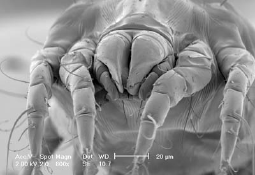
What can you do to keep mites, and other unwanted pests under control?
Vacuum ceilings, carpets, upholstery, and fabric partitions, at least once per week. However, mites use their hooked legs to hang on so well that only a fraction of these little pests can be removed by vacuuming. That’s why it is important to steam/ extract/ deep clean these same surfaces, and to clean your HVAC duct work periodically. Your employees will thank you by staying healthy and productive.
In the average office there can be over two million dust mites. They can double their numbers in ten hours and each mite produces
ten to twenty droppings per day. This can result in a total of one hundred thousand dead bodies and thirty million pieces of feces
added to your office every day. Microscopic mite feces and body fragments are small enough to be airborne, and approximately 80 percent
of all allergy sufferers are allergic to airborne mite refuse.
The symptoms of mite sensitization in humans are asthma (88%
of cases), rhinitis (90% of cases), conjunctivitis (57% of cases), and dermatitis (12% of cases). Source WIKIPEDIA.
Dust Mites Can Be Trouble.
Mites are arthropods, close relatives to spiders. They're found just about everywhere on
our planet, even as deep as 15,000 feet under the ocean, and they have been here a very long time. Mite fossils have been found
that date back nearly 400 million years and about 48,200 different kinds of mites have been discovered and described to date.
"Dust
mites" at about 0.3 mm in length are invisible to the naked eye, and reside in your carpets, upholstery, drapes, office partitions,
and any other fabrics or surfaces where they can feed on dead skin fragments. Dead skin cells commonly make up 80% of indoor dust.
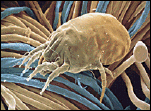
This CEILING DOCTOR Web Site is operated by Rhonco Enterprises Ltd. - Copyright © 2007 Rhonco Enterprises Ltd.
The best medicine for ceilings, walls, and carpets.
Contact: 416-243-1885 or email: help@ceilingdoctor.com
If you have ceilings, walls, and carpets that are looking a little tired and run down, then we can help. They’ll be looking and feeling their best in no time at all.
Your Ceiling Doctor team is professionally supervised, trained, equipped, insured, and covered by WSIB, and always endeavors to get the best result for you.
Your Ceiling Doctor team is professionally supervised, trained, equipped, insured, and covered by WSIB, and always endeavors to get the best result for you.
Time for a checkup?
Menu
Ceiling Doctor uses exclusive equipment, products, and procedures to provide the best care for your ceilings, walls, and carpets.


CEILING DOCTOR a Division of Rhonco Enterprises Ltd.

®
Information